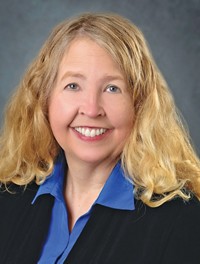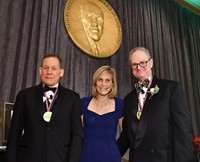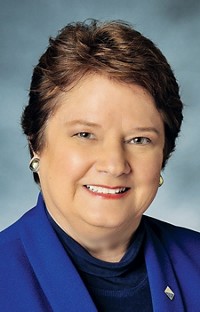Advertisement
Grab your lab coat. Let's get started
Welcome!
Welcome!
Create an account below to get 6 C&EN articles per month, receive newsletters and more - all free.
It seems this is your first time logging in online. Please enter the following information to continue.
As an ACS member you automatically get access to this site. All we need is few more details to create your reading experience.
Not you? Sign in with a different account.
Not you? Sign in with a different account.
ERROR 1
ERROR 1
ERROR 2
ERROR 2
ERROR 2
ERROR 2
ERROR 2
Password and Confirm password must match.
If you have an ACS member number, please enter it here so we can link this account to your membership. (optional)
ERROR 2
ACS values your privacy. By submitting your information, you are gaining access to C&EN and subscribing to our weekly newsletter. We use the information you provide to make your reading experience better, and we will never sell your data to third party members.
Business
Translational R&D
ACS Meeting News: Distinguishing between invention and innovation in creating jobs and wealth
by Rudy M. Baum
September 6, 2010
| A version of this story appeared in
Volume 88, Issue 36
“Invention is the conversion of cash into ideas. Innovation is the conversion of ideas into cash,” Pat N. Confalone, vice president of global R&D at DuPont Crop Protection, said at the recent ACS national meeting in Boston. Confalone spoke at a presidential event on Sunday, Aug. 22.
The session—“Translational Chemical R&D: The Driving Force of Job Creation”—was cosponsored by the Council for Chemical Research. CCR President and Executive Director Hratch Semerjian opened the symposium with the observation that CCR has been concerned for the past few years about the U.S. economy, especially its manufacturing capacity, which is now less than 12% of the gross domestic product. “We have focused on our nation’s capacity for innovation to address these trends,” he said.
Semerjian noted that CCR sponsored a forum in January to examine mechanisms “to turn these trends around.” That discussion continued at CCR’s annual meeting in April with a focus on sustainable manufacturing. The ACS presidential event, he said, was a continuation of the process.
Confalone began his talk with the following equation: R&D Investment➝Invention➝Innovation➝Translation.
He observed that the final step—translation into products—affects quality of life, job creation, and the economy. “The core force of innovation—vision, experimentation, and wise investment—has led to thousands of breakthroughs,” Confalone said.
The DuPont research executive used a number of historical examples to emphasize the crucial distinction between invention/inventors and innovation/innovators. “[Thomas] Edison was an innovator; he made money from his ideas,” Confalone said. “[Nikola] Tesla was an inventor; he spent money to create his inventions, but he was never able to monetize them.”
These observations led Confalone to the principle that “invention may occur in the laboratory, but innovation must take place in the marketplace.” Innovation, he continued, “begins with a market need, succeeds through collaboration, and doesn’t count until you get paid.”
Confalone pointed to a number of “megatrends” that are driving new product development at DuPont, such as human health, crop production, and renewable energy. For example, North America alone will produce 6.7 billion gal of biofuels—mostly ethanol—in 2010; that figure will grow 16% per year to more than 30 billion gal in 2020. DuPont is working to improve the production of biobutanol, which has much better properties as a fuel than ethanol, Confalone observed. The company is also working to significantly expand production of ethanol from a variety of cellulosic feedstocks.
Another innovative DuPont product Confalone highlighted is the insecticide Rynaxypyr. Its mechanism of action is to open calcium channels in insect muscle cells and completely deplete the cells’ store of calcium ions. Although mammal cells have calcium channels, those of insect muscle cells are 3,000 times as sensitive to Rynaxypyr as the ones in mammals, an enormous safety factor for the insecticide.
Another speaker at the symposium, Chad Mirkin, discussed “Innovation in the Age of Nanotechnology.” Mirkin is a chemistry professor at Northwestern University and director of the school’s International Institute for Nanoscience. Like Confalone, Mirkin placed translational research at the nexus of converting the fruits of basic research into products with widespread use. The public sees the benefits of the products in their lives but often does not see the connection between those products and the basic research that underpins them.
At Northwestern, Mirkin said, he and his colleagues work to foster “a culture of entrepreneurial activity” that brings together inventors, scientific ideas, business talent, and risk-taking investors.
He described the International Institute for Nanoscience, which boasts a combined operating budget and infrastructure worth more than $500 million, as an innovation hub that attracts some of the world’s best and brightest in nanoscience and nanotechnology. Research in these areas, he pointed out, shows promise in biomedical applications, including diagnostics, imaging, and therapeutics; electronics; energy applications; photonics and magnetics; nanolithography and high-resolution printing; and advanced materials, including ones involved in catalysis and environmental diagnostics and remediation.
To date, Mirkin noted, the institute has fostered the launch of 16 start-up companies. “Some places do this sort of thing well,” he said, pointing to Stanford University and Massachusetts Institute of Technology as examples, “but that’s not generally the case in the Midwest.”
Mirkin discussed in some detail the three companies he has launched in the past decade—Nanosphere in 2000, NanoInk in 2001, and Aurasense in 2009. Aurasense, for example, was founded on the surprising result that DNA-modified gold nanoparticles enter cells readily and can be used to block messenger RNA from being transcribed into protein.
The efforts at Northwestern have had a real economic impact, Mirkin said. “We have begun to establish a high-tech, entrepreneurial culture that did not exist in the Chicago area,” he said. “We’ve forged strong relationships among the science, engineering, and medical arms of the universities and the business schools and investors. We’re now approaching a half-billion dollars of translational investment in the high-tech sector.”
Other speakers at the symposium offered many examples of the same notion: Discovery through research and development is great, but it is only through translation and innovation that products—which lead to sales and jobs—are created.







Join the conversation
Contact the reporter
Submit a Letter to the Editor for publication
Engage with us on Twitter